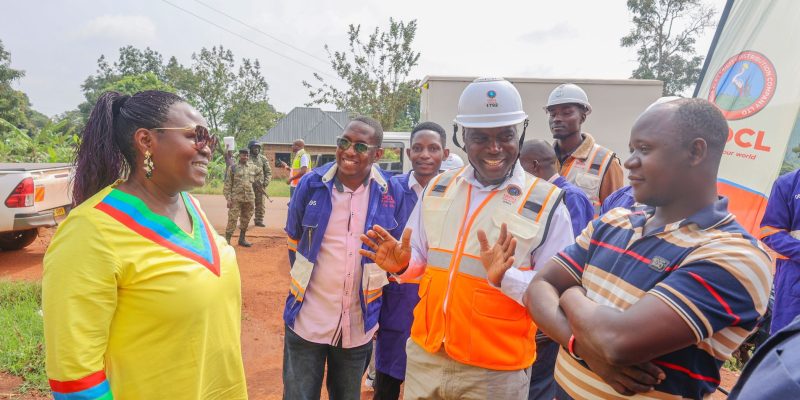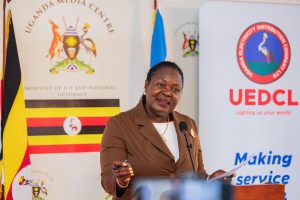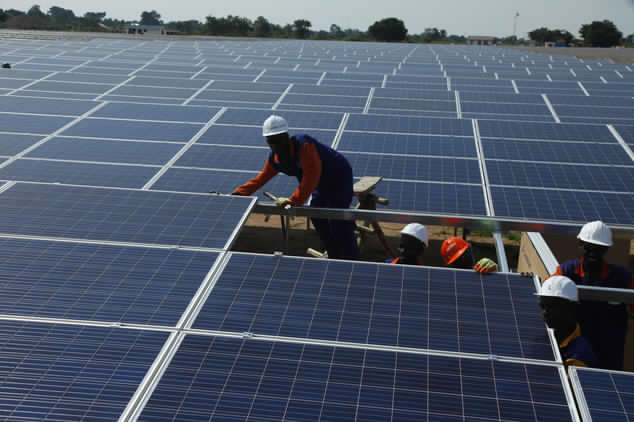
The ‘WETEREZeeee’ campaign, an amnesty program by the Uganda Electricity Distribution Company Limited (UEDCL) and the Ministry of Energy and Mineral Development to allow consumers with illegal, bypassed, or tampered electricity meters to regularize their connections without penalties, has been extended by another three months.
Ruth Nankabirwa, the Energy Minister, says the initial three-months campaign had seen 22,937 illegally connected electricity users respond to the call to become billed UEDCL customers, earning themselves free charging metres in the process.
“I would like to announce that WETEREZeee has been given another three months after we received numerous requests to extend it. People claim they resorted to stealing the power because the meters were very expensive; that is why we’re giving them free ones,” she said, noting that a meter used to cost more than UGX 700,000, at some point.
It is only after the new amnesty extension elapses that all power thieves will face the law, she added.
Nankabirwa was speaking at a media briefing last week where she shared an update on Uganda’s electricity distribution services.
Infrastructure Boost
UEDCL, she explained, had continued to refurbish and expand the electricity distribution infrastructure to improve reliability of power supply after taking over the concession from Umeme Limited on April 1, this year.
These works include the critical expansion of the Kakiri substation from 10MW to 20MW; the Kabale substation from 2.5MW to 5MW and the Masaka Central substation from 5MW to 7MW. The company had also replaced 206 faulty transformers, while connecting 140,000 new customers in total, to date.
In addition, UEDCL has secured land for new substations at Magyigye and Kawempe, and has drawn up plans to refurbish nine substations, inject 518 new transformers, and expand 40 medium-voltage lines.
The ongoing CapEx interventions are vital because prior to the expiration of Umeme’s electricity distribution concession, government restricted the company from network investments over a three-year period (from 2022) because it wanted to ensure the “buy-out amount” was affordable.
The buy-out amount is the valuation of all the capital investments that Umeme had made in the electricity distribution network over the years but had not yet recovered by the end of the concession (through its power tariffs).
In its concession agreement with Uganda’s government, Umeme was only to relinquish its hold on the network assets after the payment of this money.
Following the Auditor General’s (AG) guidance, government paid Umeme $118 million as the buy-out amount, to enable the transfer of its assets to UEDCL. (Umeme meanwhile continues to demand for more money – via arbitration; insisting the AG did not capture all the investments it had made.)
The aforementioned enforced neglect left the network infrastructure in dire need for investments to bring it to an optimal operational level.
In addition to the aging infrastructure, vandalism, overloaded transformers, feeders and substations saw the system register a high number of faults leading to increased electricity blackouts this year.
Yet in trying to address these challenges power has to be switched off as well, in the places where the upgrades are ongoing, the minister said.
“A lot is being done to stabilize power. The consequential inconveniences are regretted but they are unavoidable since the system needs to be ‘healthy’ to serve us adequately. We are trying to cure a sickness but we will feel some pain in the process – as it happens when we visit the doctor. I want to assure you that it will not be forever. We are still in the transition period,” noted Nankabirwa.

Nankabirwa addressing the media last week
The Free Electricity Connections Policy where the government under the Ministry’s Electricity Access Scale Up Project (EASP) is supporting the no-pole and one-pole connection service is still ongoing, the minister added.
Critical transmission infrastructure, under the Uganda Electricity Transmission Company Ltd (UETCL) was coming up as well; including substations and transmission lines.
“Yesterday in cabinet, a loan was approved which is going to see us establish a substation in Ntinda. UETCL has secured seven acres of unencumbered land there. There were also other transmission projects under a second loan that cabinet passed as well,” Nankabirwa said.
A 400 kV transmission line from Olwiyo-Nimule and Nimule-Juba to be funded by the African Development Bank (AfDB) was in the pipeline; so too were other lines in Masaka, Mbarara and Mirama (to supply the Inspire Africa Coffee facility).
“This means that power is going to be stabilized because more transformers have been injected,” she emphasized.
Financing hurdles
At a public hearing in October last year to discuss UEDCL’s proposed takeover of the distribution network, its managing director, Paul Mwesigwa, said UGX 4.02 trillion (about $1.2 billion) was needed to finance the company’s operational and capital costs for three years starting April 2025.
Later, on March 31, 2025, at the ‘Big Switch’ takeover event from Umeme, Mwesigwa, said his company had received the $74 million it needed for its CapEx in its first year of managing the nationwide network.
At least $50m of this would come as a low interest loan (under 10% per annum) from ABSA Bank, with the balance coming from the tariff returns, he had told this website in a subsequent interview.
It remains unclear whether government approved the UGX 4.02 trillion budget in its entirety.
Nankabirwa had indicated in July (when marking 100 days of UEDCL’s management of the electricity distribution network) that “UEDCL will require about $350 million (UGX 1.2 trillion) for its operations and investments for the next five years.”
This is way below the UGX 4.02 trillion ($1.2b) the company had requested for three years.
Industry sources say UEDCL was accorded less money to ensure a lower tariff. Lowering the tariff (a government strategy) essentially impacts on the allowable investment cost to UEDCL.
“What Umeme used to be allowed is more than what UEDCL has been allowed. These costs get factored into the tariff,” one source, who preferred anonymity said.

A UEDCL truck laden with equipment
While UEDCL runs a self-sustaining model (meaning it does not receive any funding from the Consolidated Fund) since it generates revenues daily from charging an electricity tariff to the end user, it still needs the state to help it acquire loans at low interest rates.
But with the country’s debt-to-GDP ratio projected to hit 53.34 per cent or higher in FY2025/26, well above the threshold of 49.3 per cent set under the Charter of Fiscal Responsibility, Uganda’s credit worthiness is increasingly looking weak.
This should affect how much it can borrow to invest in key sectors including electricity.
“The government has to make sure that all important sectors get money. One can’t receive 100% funding when other sectors like health are getting zero; we have to balance up,” said Nankabirwa last week.
So while the government has approved UEDCL’s five-year investment strategy it remains to be seen whether this money will always come on time. This could mean load-shedding is sustained for the foreseeable future.









